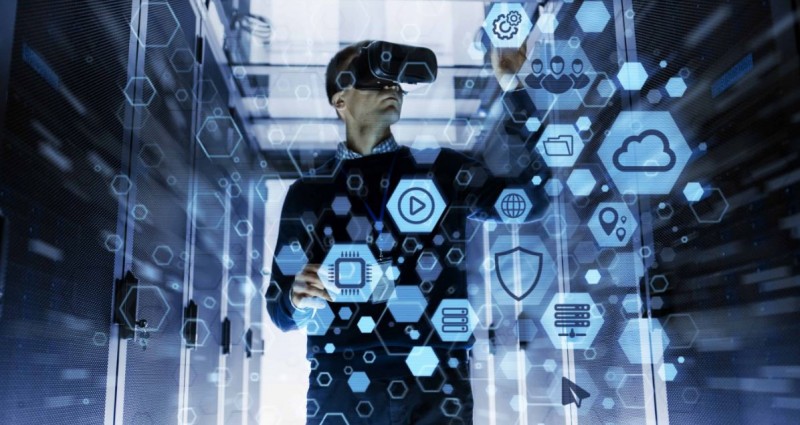
1. Introduction
Augmented Reality (AR) has emerged as a groundbreaking technology with the potential to revolutionize various aspects of our lives. By blending the virtual world with the real world, AR creates immersive and interactive experiences that enhance our perception and understanding of the environment around us. This article explores the applications of AR and its potential impact on society in the future.
2. Understanding Augmented Reality (AR)
Augmented Reality refers to the technology that overlays digital information, such as images, videos, or 3D models, onto the real world. It is achieved through the use of devices like smartphones, tablets, smart glasses, or headsets, which integrate virtual elements into our physical surroundings. AR enhances our perception by providing real-time contextual information and interactive visuals.
3. Current Applications of Augmented Reality
3.1 Gaming and Entertainment
AR has made significant strides in the gaming and entertainment industry. With games like Pokémon Go, players can capture virtual creatures in real-world locations. AR also enables immersive experiences through virtual reality headsets, where users can interact with digital environments.
3.2 Retail and E-commerce
In the retail sector, AR offers innovative ways for customers to visualize products. Virtual try-on apps allow users to see how clothes or accessories look on them before making a purchase. AR can also provide additional product information, customer reviews, and personalized recommendations.
3.3 Healthcare and Medicine
AR is transforming healthcare by assisting medical professionals in diagnosis, surgery, and training. Surgeons can use AR overlays during procedures to visualize patient data, such as CT scans or X-rays, directly on the body. Medical students can also benefit from AR simulations for training purposes.
3.4 Education and Training
AR is revolutionizing education by providing immersive and interactive learning experiences. Students can explore historical sites, observe scientific phenomena, or interact with virtual objects, enhancing their understanding and engagement. AR also enables training simulations for various industries, such as aviation or engineering.
4. The Potential Impact of Augmented Reality on Society
4.1 Enhancing User Experience
AR has the potential to enhance user experiences across multiple domains. From personalized advertising to interactive museum exhibits, AR can provide engaging and tailored experiences that captivate users and leave a lasting impression.
4.2 Transforming Communication and Collaboration
AR has the power to transform how we communicate and collaborate. With AR glasses or headsets, individuals can project virtual avatars or share real-time visual information, enabling more immersive and efficient remote meetings. AR also has the potential to bridge language barriers by providing real-time translation overlays.
4.3 Revolutionizing Industries
Various industries stand to benefit from the integration of AR technology. In manufacturing, AR can improve productivity by overlaying instructions and visual cues for assembly tasks. In architecture and design, AR allows clients to visualize structures or interior designs in real-world settings. AR can also enhance customer service experiences by providing virtual assistants and interactive support.
4.4 Bridging the Gap Between Physical and Digital Worlds
AR has the potential to bridge the gap between physical and digital worlds, creating a seamless integration of the two. It enables users to interact with digital content in real-world environments, unlocking new opportunities for entertainment, education, and productivity.
5. Challenges and Limitations of Augmented Reality
While AR holds immense potential, it also faces challenges and limitations. Privacy concerns, technological constraints, and social acceptance are some of the hurdles that need to be addressed. Ensuring user privacy, improving hardware capabilities, and educating the public about the benefits of AR will be crucial for its widespread adoption.
6. The Future of Augmented Reality
The future of augmented reality is promising. Advancements in hardware, such as lightweight and high-resolution displays, will make AR more accessible and comfortable for users. The development of 5G networks will enable faster data transmission, enhancing the real-time AR experience. As AR evolves, we can expect more sophisticated applications and integration into various aspects of our daily lives.
7. Conclusion
Augmented Reality is poised to transform the way we interact with the world. From gaming and entertainment to healthcare and education, the applications of AR are vast and impactful. As technology continues to advance, the potential of AR to enhance user experiences, revolutionize industries, and bridge the gap between physical and digital realms becomes even more evident. Embracing the future of augmented reality will undoubtedly shape our society in remarkable ways.
The Role of Technology in Transforming Healthcare Delivery
The Impact of Social Media on Political Activism and Social Movements
Apple Unveils Official Store on WeChat, Revolutionizing China's Mobile Commerce